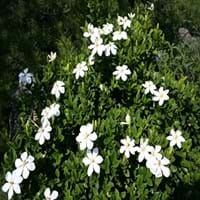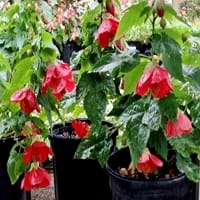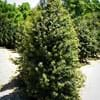Life Span
Perennial
Annual
Type
Broadleaf Evergreen
Tender Perennial
Origin
Eastern Asia
Hybrid origin
Types
Gardenia anapetes, Gardenia candida
Not available
Habitat
Dry Forest, Subtropical climates
subtropical regions
USDA Hardiness Zone
7-10
8-10
AHS Heat Zone
Not Available
10-1
Sunset Zone
21,22
H1, H2, 8, 9, 12, 13, 14, 15, 16, 17, 18, 19, 20, 21, 22, 23, 24
Habit
Prostrate/Trailing
Oval or Rounded
Flower Color
White, Ivory
Pink, Peach
Flower Color Modifier
Bicolor
Not Available
Fruit Color
Not Available
Not Available
Leaf Color in Spring
Dark Green
Green, Gray Green, Dark Green, Ivory
Leaf Color in Summer
Dark Green
Green, Gray Green, Dark Green, Ivory
Leaf Color in Fall
Dark Green
Green, Gray Green, Dark Green, Ivory
Leaf Color in Winter
Dark Green
Green, Gray Green, Dark Green, Ivory
Leaf Shape
Elliptic
Maple shaped
Plant Season
Spring, Summer, Fall, Winter
Spring, Summer, Fall, Winter
Sunlight
Full Sun, Partial Sun
Full Sun, Partial Sun
Type of Soil
Clay, Loam, Sand
Loam, Sand
The pH of Soil
Acidic, Neutral
Acidic, Neutral, Alkaline
Soil Drainage
Well drained
Well drained
Bloom Time
Late Spring, Early Summer, Summer, Late Summer, Early Fall, Fall
Indeterminate
Tolerances
Shade areas
Not Available
Where to Plant?
Container, Ground, Pot
Ground, Pot
How to Plant?
Seedlings, Stem Planting
Cuttings, Seedlings
Plant Maintenance
Low
Medium
Watering Requirements
Do Not over Water, Keep ground moist, Never Over-water, Requires a lot of watering, Requires regular watering, Requires watering in the growing season
Do Not over Water, Keep ground moist, Keep the Soil well drained, Requires regular watering
In Summer
Ample Water
Lots of watering
In Spring
Moderate
Moderate
In Winter
Less Watering
Average Water
Soil pH
Acidic, Neutral
Acidic, Neutral, Alkaline
Soil Type
Clay, Loam, Sand
Loam, Sand
Soil Drainage Capacity
Well drained
Well drained
Sun Exposure
Full Sun, Partial Sun
Full Sun, Partial Sun
Pruning
Prune in summer, Remove damaged leaves, Remove dead leaves, Remove dead or diseased plant parts
Prune to stimulate growth, Remove damaged leaves, Remove dead branches, Remove dead leaves
Fertilizers
All-Purpose Liquid Fertilizer, Magnesium, Nitrogen, Potassium
20-20-20 amount
Pests and Diseases
Mealybugs, Spider mites, Whiteflies
Abutilon mosaic virus, Aphids, Beetles, Scale
Plant Tolerance
Shade areas
Not Applicable
Flower Petal Number
Double, Semi-Double
Single
Foliage Texture
Fine
Medium
Foliage Sheen
Glossy
Matte
Attracts
Bugs, Insects, Leaf Hoppers
Butterflies, Flying insects, Hummingbirds
Allergy
Asthma, breathing problems
Not Available
Aesthetic Uses
Beautification, Landscape Designing, Showy Purposes
Beautification, Bonsai, Cut Flowers, Decorating walls, Hanging Basket, small hedge, Used as an interior landscaping species
Beauty Benefits
Good for skin and hair
Not Available
Environmental Uses
Air purification, Food for insects, Prevent Soil Erosion, Shelter for wildlife, Very little waste
Air purification
Medicinal Uses
Abdominal Disease, Abscess, Acid Reflux
Not Available
Part of Plant Used
Fruits, Leaves, Root
Not Available
Other Uses
Air freshner, Economic Purpose, Employed in herbal medicine, Medicinal oil, Used for its medicinal properties
Cut Flowers, Decoration Purposes, Grown in botanical gardens as a specimen, Used as Ornamental plant, Used for Landscaping
Used As Indoor Plant
Yes
No
Used As Outdoor Plant
Yes
Yes
Garden Design
Container, Feature Plant, Foundation, Groundcover, Mixed Border, Tropical
Bedding Plant, Container, Feature Plant, Foundation, Hedges, Mixed Border, Topiary / Bonsai / Espalier, Tropical
Botanical Name
GARDENIA jasminoides 'Radicans'
ABUTILON 'Savitzii'
Common Name
Gardenia
Flowering Maple, Parlour Maple
In Hindi
बौना गार्डेनिया
flowering maple
In German
Dwarf Gardenia
Schönmalve
In French
Gardenia Dwarf
érable floraison
In Spanish
Gardenia enana
arce de floración
In Greek
νάνος Gardenia
ανθοφορία σφενδάμου
In Portuguese
Gardenia Dwarf
de bordo florescimento
In Polish
Dwarf Gardenia
klon kwitnienia
In Latin
Gardenia Dwarf
Abutilon
Phylum
Tracheophyta
Magnoliophyta
Class
Magnoliopsida
Magnoliopsida
Family
Rubiaceae
Malvaceae
Clade
Angiosperms, Asterids, Eudicots
Angiosperms, Rosids
Subfamily
Cinchonoideae
Malvoideae
Importance of Dwarf Gardenia and Flowering Maple
Want to have the most appropriate plant for your garden? You might want to know the importance of Dwarf Gardenia and Flowering Maple. Basically, these two plants vary in many aspects. Compare Dwarf Gardenia and Flowering Maple as they differ in many characteristics such as their life, care, benefits, facts, etc. Every gardener must at least have the slightest clue about the plants he wants to plant in his garden. Compare their benefits, which differ in many ways like facts and uses. The medicinal use of Dwarf Gardenia is Abdominal Disease, Abscess and Acid Reflux whereas of Flowering Maple is Not Available. Dwarf Gardenia has beauty benefits as follows: Good for skin and hair while Flowering Maple has beauty benefits as follows: Good for skin and hair.
Compare Facts of Dwarf Gardenia vs Flowering Maple
How to choose the best garden plant for your garden depending upon its facts? Here garden plant comparison will help you to solve this query. Compare the facts of Dwarf Gardenia vs Flowering Maple and know which one to choose. As garden plants have benefits and other uses, allergy is also a major drawback of plants for some people. Allergic reactions of Dwarf Gardenia are Asthma and breathing problems whereas of Flowering Maple have Not Available respectively. Having a fruit bearing plant in your garden can be a plus point of your garden. Dwarf Gardenia has no showy fruits and Flowering Maple has no showy fruits. Also Dwarf Gardenia is not flowering and Flowering Maple is not flowering . You can compare Dwarf Gardenia and Flowering Maple facts and facts of other plants too.





